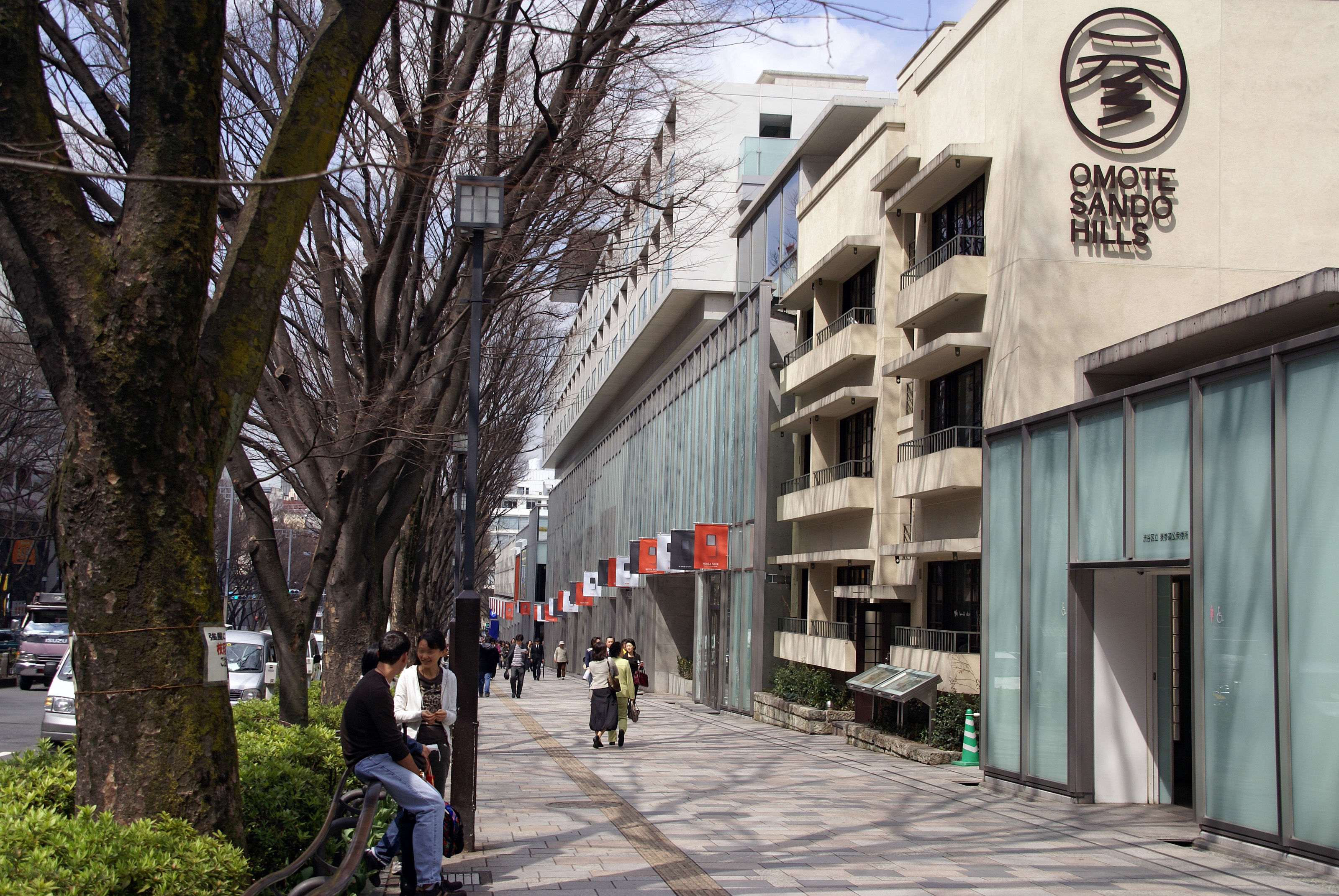|
Shoichi Aoki
is a Japanese photographer and creator of the magazines ''STREET,'' ''TUNE,'' and ''Fruits (magazine), FRUiTS.'' He also subsequently created the ''Fruits'' and ''Fresh Fruits'' (collections of Japanese street fashion) photo-books as a way of offering his photos to the foreign market. Life and work Aoki was born in Tokyo. He began documenting street fashion in Tokyo's fashionable Harajuku area in the mid 1990s when he noticed a marked change in the way young people were dressing. Rather than following European and American trends, people were customising elements of traditional Japanese dress—kimono, obi (sash), obi sashes and geta (footwear), geta sandals—and combining them with handmade, secondhand and alternative designer fashion in an innovative DIY approach to dressing. In 1997, Aoki founded the monthly magazine ''FRUiTS,'' now a cult fanzine with an international following, to record and celebrate the freshness of fashion in Harajuku. Publications Magazines * ''STREET' ... [...More Info...] [...Related Items...] OR: [Wikipedia] [Google] [Baidu] |
Fruits (magazine)
''Fruits'' (stylized "FRUiTS") was a monthly Japanese street fashion magazine founded in 1997 by photographer Shoichi Aoki. Though FRUiTS covered styles found throughout Tokyo, it is associated most closely with the fashion subcultures found in Tokyo's Harajuku, Harajuku district. The magazine primarily focused on individual styles found outside the fashion-industry mainstream, as well as subcultures specific to Japan, such as Lolita fashion, lolita and ganguro, and local interpretations of larger subcultures like Punk fashion, punk and Goth subculture, goth. Content FRUiTS featured a simple layout, with the bulk of the magazine made up of single full-page photographs accompanied by a brief profile of the photographed person, which included their age, occupation, and a description of what brands they were wearing (if applicable), as well as their self-described "point of fashion" (style inspiration). Most issues included only a couple of advertisements, and typically only for loc ... [...More Info...] [...Related Items...] OR: [Wikipedia] [Google] [Baidu] |
Tokyo
Tokyo (; ja, 東京, , ), officially the Tokyo Metropolis ( ja, 東京都, label=none, ), is the capital and largest city of Japan. Formerly known as Edo, its metropolitan area () is the most populous in the world, with an estimated 37.468 million residents ; the city proper has a population of 13.99 million people. Located at the head of Tokyo Bay, the prefecture forms part of the Kantō region on the central coast of Honshu, Japan's largest island. Tokyo serves as Japan's economic center and is the seat of both the Japanese government and the Emperor of Japan. Originally a fishing village named Edo, the city became politically prominent in 1603, when it became the seat of the Tokugawa shogunate. By the mid-18th century, Edo was one of the most populous cities in the world with a population of over one million people. Following the Meiji Restoration of 1868, the imperial capital in Kyoto was moved to Edo, which was renamed "Tokyo" (). Tokyo was devastate ... [...More Info...] [...Related Items...] OR: [Wikipedia] [Google] [Baidu] |
Street Fashion
Street fashion is fashion that is considered to have emerged not from studios, but from the grassroots streetwear. Street fashion is generally associated with youth culture, and is most often seen in major urban centers. Magazines and Newspapers like the New York Times and Elle magazine, Elle commonly feature candid photographs of individuals wearing urban, stylish clothing. Japanese street fashion sustains multiple simultaneous highly diverse fashion movements at any given time. Mainstream fashion often appropriates street fashion trends as influences. Nowadays, street fashion is getting more and more popular. Most major youth subcultures have had an associated street fashion. Streetstyle is different all around the globe. Description The “street” approach to style and fashion is often based on individualism, rather than focusing solely on current fashion trends. Using street style methods, individuals demonstrate their multiple, negotiated identities, in addition to utiliz ... [...More Info...] [...Related Items...] OR: [Wikipedia] [Google] [Baidu] |
Harajuku
is a district in Shibuya, Tokyo, Japan. Harajuku is the common name given to a geographic area spreading from Harajuku Station to Omotesando, corresponding on official maps of Shibuya ward as Jingūmae 1 chōme to 4 chōme. In popular reference, Harajuku also encompasses many smaller backstreets such as Takeshita Street and Cat Street spreading from Sendagaya in the north to Shibuya in the south. Harajuku is known internationally as a center of Japanese youth culture and fashion. Shopping and dining options include many small, youth-oriented, independent boutiques and cafés, but the neighborhood also attracts many larger international chain stores with high-end luxury merchandisers extensively represented along Omotesando. Harajuku Station on the East Japan Railway (JR East) Yamanote Line and Meiji-jingumae 'Harajuku' Station served by the Tokyo Metro Chiyoda Line and Tokyo Metro Fukutoshin Line also act as gateways to local attractions such as the Meiji Shrine, Yoyogi ... [...More Info...] [...Related Items...] OR: [Wikipedia] [Google] [Baidu] |
Kimono
The is a traditional Japanese garment and the national dress of Japan. The kimono is a wrapped-front garment with square sleeves and a rectangular body, and is worn left side wrapped over right, unless the wearer is deceased. The kimono is traditionally worn with a broad sash, called an , and is commonly worn with accessories such as zōri sandals and socks. Kimono have a set method of construction and are typically made from a long, narrow bolt of cloth known as a , though Western-style fabric bolts are also sometimes used. There are different types of kimono for men, women, and children, varying based on the occasion, the season, the wearer's age, and – less commonly in the modern day – the wearer's marital status. Despite the kimono's reputation as a formal and difficult-to-wear garment, there are types of kimono suitable for both formal and informal occasions. The way a person wears their kimono is known as . Though previously been the most common Japanese garm ... [...More Info...] [...Related Items...] OR: [Wikipedia] [Google] [Baidu] |
Obi (sash)
An is a belt of varying size and shape worn with both traditional Japanese clothing and uniforms for Japanese martial arts styles. Originating as a simple thin belt in Heian period Japan, the developed over time into a belt with a number of different varieties, with a number of different sizes and proportions, lengths, and methods of tying. The , which once did not differ significantly in appearance between men and women, also developed into a greater variety of styles for women than for men. Despite the kimono having been at one point and continuing to appear to be held shut by the , many modern are too wide and stiff to function in this way, with a series of ties known as , worn underneath the , used to keep the kimono closed instead. are categorised by their design, formality, material, and use, and can be made of a number of types of fabric, with heavy brocade weaves worn for formal occasions, and some lightweight silk worn for informal occasions. are also made from m ... [...More Info...] [...Related Items...] OR: [Wikipedia] [Google] [Baidu] |
Geta (footwear)
A Geta, ( zh, 木屐, ja, 下駄; geta or getas) is a traditional East Asian footwear that resembles flip-flops. A kind of sandals, geta have a flat wooden base elevated with up to three (though commonly two) "teeth", held on the foot with a fabric thong, which keeps the foot raised above the ground. History The earliest known pair of geta was excavated in a neolithic archaeological site near Ningbo, Zhejing, China, dated to the Liangzhu culture (3400–2250 BCE). These geta differed in construction to modern geta, having five or six holes in place of the modern-day three. The use and popularity of wooden clogs in China has been recorded in other sources dating to between the Spring and Autumn period (771–476 BCE) to the Qin (221–206 BCE) and Han dynasties (202 BCE–220 CE). Geta-style shoes were worn in Southern China likely until sometime between the Ming (1368–1644) and Qing dynasties (1636/1644–1912), when they were replaced by other types of footwear. It ... [...More Info...] [...Related Items...] OR: [Wikipedia] [Google] [Baidu] |
Dazed
''Dazed'' (''Dazed & Confused'' until February 2014) is a bi-monthly British style magazine founded in 1991. It covers music, fashion, film, art, and literature. Dazed is published by Dazed Media, an independent media group known for producing stories across its print, digital and video brands. The company's portfolio includes titles '' AnOther'', Dazed Beauty and NOWNESS. The company's newest division, Dazed Studio, creates brand campaigns across the luxury and lifestyle sectors. Based in London, its founding editors are Jefferson Hack and fashion photographer Rankin. Background ''Dazed'' was begun by Jefferson Hack, and Rankin while they were studying at London College of Printing (now London College of Communications). Beginning as a black-and-white folded poster the magazine soon turned full colour and was promoted at London club nights. The Norwegian photographer and later Hells Angel Marcel Leliënhof was involved with the magazine in the first editions, as was the sty ... [...More Info...] [...Related Items...] OR: [Wikipedia] [Google] [Baidu] |
Fanzine
A fanzine (blend word, blend of ''fan (person), fan'' and ''magazine'' or ''-zine'') is a non-professional and non-official publication produced by fan (person), enthusiasts of a particular cultural phenomenon (such as a literary or musical genre) for the pleasure of others who share their interest. The term was coined in an October 1940 science fiction fanzine by Russ Chauvenet and first popularized within science fiction fandom, and from there the term was adopted by other communities. Typically, publishers, editors, writers and other contributors of Article (publishing), articles or illustrations to fanzines are not paid. Fanzines are traditionally circulated free of charge, or for a nominal cost to defray postage or production expenses. Copies are often offered in exchange for similar publications, or for contributions of art, articles, or letters of comment (LoCs), which are then published. Some fanzines are typed and photocopied by amateurs using standard home office equipme ... [...More Info...] [...Related Items...] OR: [Wikipedia] [Google] [Baidu] |
Japanese Editors
Japanese may refer to: * Something from or related to Japan, an island country in East Asia * Japanese language, spoken mainly in Japan * Japanese people, the ethnic group that identifies with Japan through ancestry or culture ** Japanese diaspora, Japanese emigrants and their descendants around the world * Japanese citizens, nationals of Japan under Japanese nationality law ** Foreign-born Japanese, naturalized citizens of Japan * Japanese writing system, consisting of kanji and kana * Japanese cuisine, the food and food culture of Japan See also * List of Japanese people * * Japonica (other) * Japonicum * Japonicus * Japanese studies Japanese studies ( Japanese: ) or Japan studies (sometimes Japanology in Europe), is a sub-field of area studies or East Asian studies involved in social sciences and humanities research on Japan. It incorporates fields such as the study of Japan ... {{disambiguation Language and nationality disambiguation pages ... [...More Info...] [...Related Items...] OR: [Wikipedia] [Google] [Baidu] |
Living People
Related categories * :Year of birth missing (living people) / :Year of birth unknown * :Date of birth missing (living people) / :Date of birth unknown * :Place of birth missing (living people) / :Place of birth unknown * :Year of death missing / :Year of death unknown * :Date of death missing / :Date of death unknown * :Place of death missing / :Place of death unknown * :Missing middle or first names See also * :Dead people * :Template:L, which generates this category or death years, and birth year and sort keys. : {{DEFAULTSORT:Living people 21st-century people People by status ... [...More Info...] [...Related Items...] OR: [Wikipedia] [Google] [Baidu] |





.jpg)
.jpg)